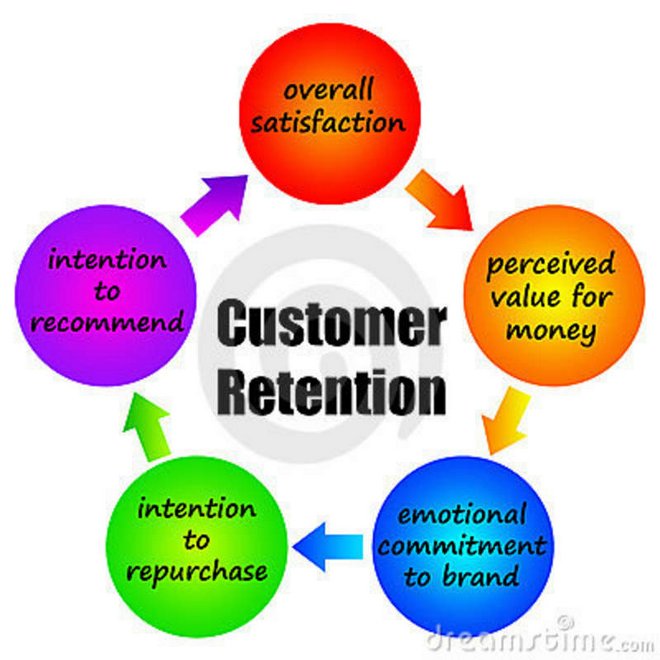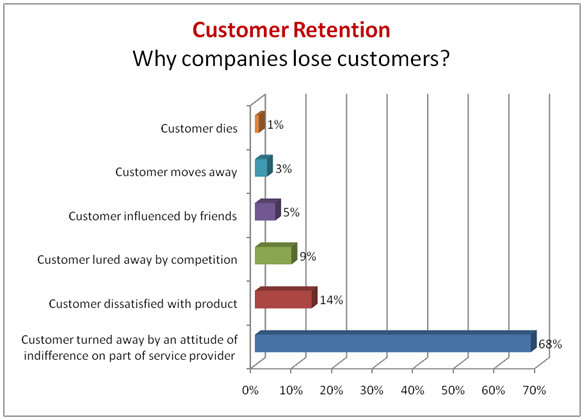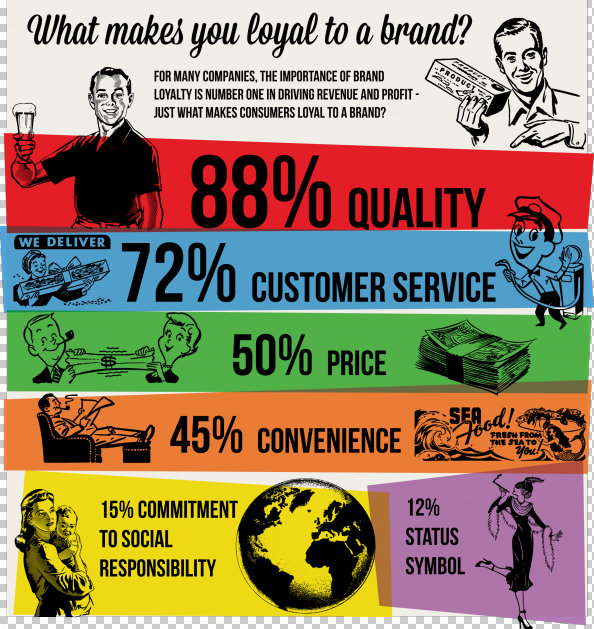Building Brand Loyalty and Annihilating Customer Attrition

The returning customers form a core group of supporters from which you can extend your reach and grow your business. Today, we’re talking about the best ways to measure and improve brand loyalty. That means utilizing effective analytics, and implementing user-friendly strategies that will promise to cut back on your customer attrition, thereby turning your brand into a commodity that your customers will enthusiastically support.
First, let’s define our terms. What is brand loyalty, and what do you need to know about customer retention? These phrases are really synonyms. They both mean that the customers your online store is attracting are going to be return business. Customer attrition, on the other hand, is the amount of loyal customers that you end up losing for one reason or another. These are somewhat immaterial expressions that need to be quantified in more concrete terms. That’s where your handy dandy metric measurements come into play. There are several different helpful metrics for measuring brand loyalty, and we’ll be giving you the lowdown on what they are, and how you should be using them to maximize the lifetime value of your customers.
LVC
Speaking of the lifetime value of a customer. That’s the first metric you’ll need to understand. This metric is, of course, an estimate. That is unless you’ve been in business for 70+ years and have kept exemplary records for individual customers. But then, if that were the case, we wouldn’t be talking about ecommerce anymore, but regular brick and mortar retail. So assuming that you aren’t ageless and omniscient, let’s begin with the formula for evaluating a customer’s lifetime value.Customer Lifetime value (CLV) = (AVG profit per year x number of years)-acquisition costs
This next part is very important; this formula will only be effective if you have an accurate grasp of your profit margins. Profit margins are something you should be keeping close track of anyway. So consider this an added incentive for good bookkeeping, (like you really needed one more.)
Measuring CLV will help you to take a big picture approach to your business. You’re not living from paycheck to paycheck; you’re trying to build an empire. So try not to think about your customers in terms of single orders or purchases, but instead realize that every customer can be a repeat customer, if you approach them the right way.
One way to get a grip on how many repeat customers your business will have, aside from keeping contact lists and opt-in subscriptions to your newsletters and such, is to measure your NPS.
Net Promoter Score

Net Promoter Score is the measurement your customers give your website, rating their satisfaction with your services. However, while they’re rating you, you’re actually categorizing them. It works like this: before finalizing a purchase you put in an optionally answerable survey. You just ask your customers how satisfied they were with their shopping experience. A simple score that your customers give your site from 1-10 can reveal how big a cheerleader they’ll be for your business. With an NPS in place, you can gauge how much word of mouth advertising you’re likely to produce-- or how many bad reviews.
The general breakdown for Net Promoter score goes a little like this: A score between 9 and 10 is repeat business. They enjoyed their experience and they’ll be back. They’ll probably even go to bat for you with their friends and possibly attract other visitors to your site. Scores between 7 and 8 are satisfied customers, but would probably be susceptible to your competition’s marketing ploys. You don’t have their complete trust and happiness in your brand. Not yet. A score of 1 through 6 is trouble. These people were not happy with their experience and are likely to talk negatively about your company in the future. It might not be a bad idea to reach out to these people and see if any amends can be made.
Reduce customer attrition
It’s much easier to convince a returning visitor to buy than it is convince a unique visitor to do the same. And when we say easier, we mean much less expensive. Part of the cost of running a business is new customer acquisition. If the customer is already acquired, you can relax the budget a bit when trying to re-convert.That’s because the initial advertising that put your brand in view for your return customers has already done its job. These folks are aware of you, and are fond enough of you to have already made a purchase. If everything worked out well for them once, there’s no reason to assume it wouldn’t be the same way again.
In these cases, the only thing you have to worry about is keeping the competition from wooing them away with a better offer.
Think about it this way, working to keep customer attrition at a minimum is like trying to fill up a leaky bucket with water. You want to plug up as many holes as you can so the bucket will stay fuller for longer. If you’re not plugging up the holes, you’re essentially just pouring profit down the drain. So how do we go about trying to reduce customer attrition, and working to improve retention? Let’s take a look.
Ways to Measure and Improve Retention

It’s better to know where your retention rate is at before developing a plan to improve it. So first we need to talk about how you can measure your brand loyalty. Google Analytics has a helpful feature to do just that. Using Google’s Loyalty reports you can measure:
- Loyalty- that is the number of visits within a given time period.
- Recency- How long ago was the last time your repeat visitor looked at your site?
- Length of visits- This is the amount of time that the repeat visitor stayed on your site.
- And Depth of visits-the number of different pages visited during the length of the visitor’s stay.
For example, using what you know about your loyal customers in aggregate, you can target all of the ones that stayed on a certain product page for a certain length of time. Let’s say you segmented your loyal customers by visitors to a single product page within the last week. Further segment that group to those who stayed for over 5 minutes without completing an order. These were people that were on the fence, but couldn’t commit to the purchase. Assuming that you have their contact information from the former purchases that they’ve made, you can reach out to these customers with a special offer email. Traditionally, these sorts of highly targeted email campaigns have been extremely successful.
But beyond looking for that extra conversion, you can keep a customer happy by working to meet a need. We’ve already touched on this somewhat, briefly mentioning that an opt-in signup for your mailing list and newsletter is a fantastic way to keep customers engaged. You can also have a registration or subscription situation in place. That way your visitors will be more inclined to become loyal customers once they’ve made their first purchases.
That means you need to offer some incentive to registering beyond just finishing the transaction that they’ve decided to make. Having their information stored for easy return purchasing is sometimes incentive enough. However, your visitors might also resent having to give out more of their personal information than is necessary for online shopping in the first place. In that case, an incentive to register for your online store could be something as simple as free content. Helpful how-to information or an educational e-book is the perfect fit for something like this.
Another way to build customer retention is with a reward program of some sort. Special offers and exclusive deals for membership can have a powerful allure. So don’t feel hesitant to sacrifice a little capital in order to improve retention. Remember that it will make you a lot more profit over the customer’s lifetime.
You also shouldn’t overlook the power of social media to keep customer attrition at a minimum. Social media allows you to have a real relationship with your visitors, and build a brand loyalty based on individual interactions rather than favors done on a mass scale.
Promoting client loyalty with simple strategies like these can go a long way in building your online store into an ecommerce powerhouse. So don’t be shy about interacting with customers. They appreciate the individual attention, and if so enticed, they’ll become valuable lifetime customers who will pay back the difference many times over. So remember to keep customer attrition down and brand loyalty to a maximum by continuing to get the best ecommerce advice available on the Ashop blog.














Comment(s)0